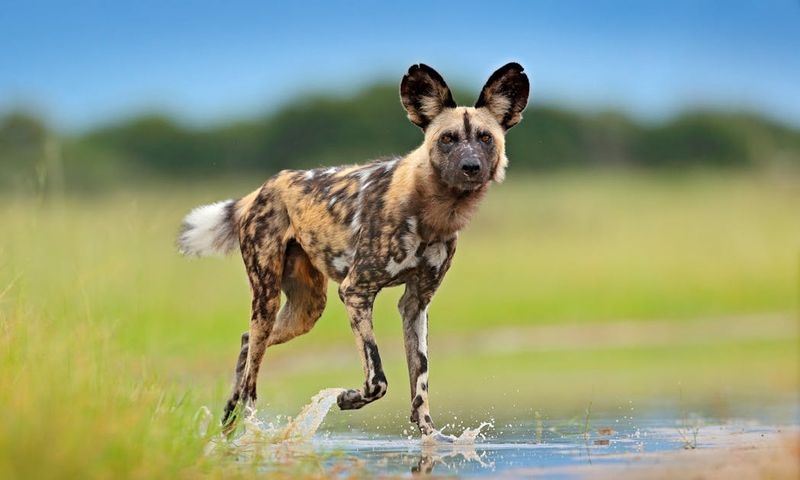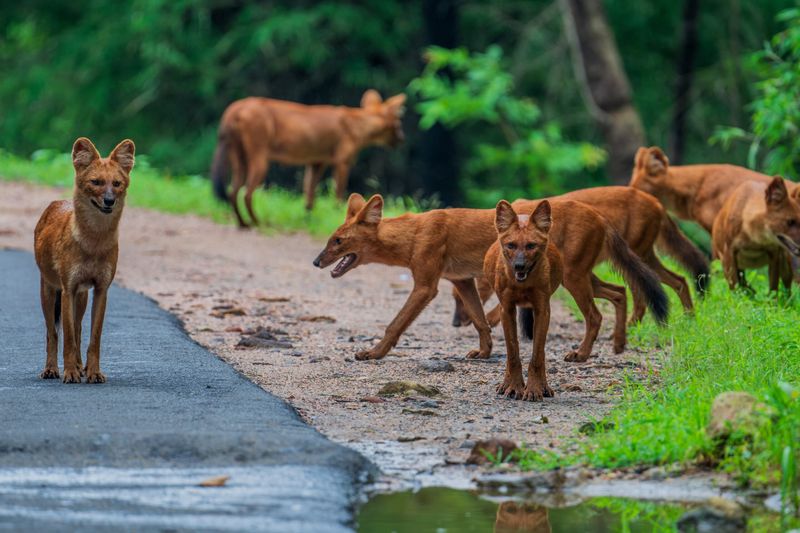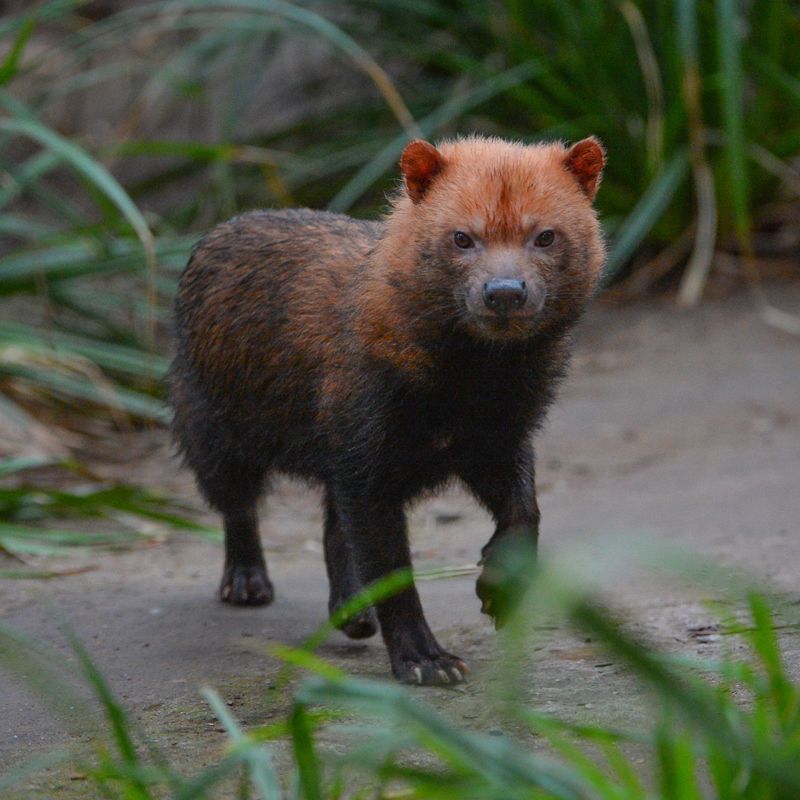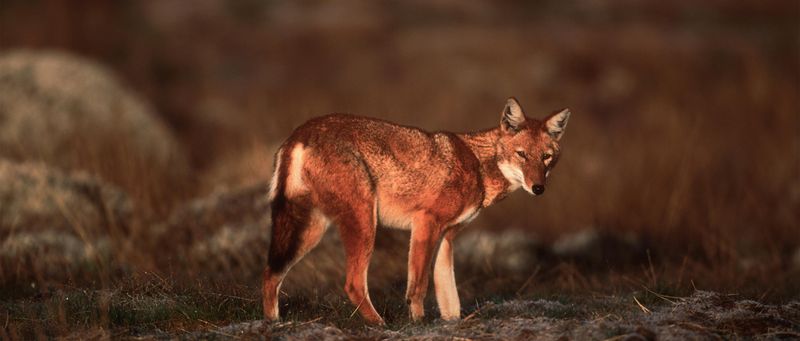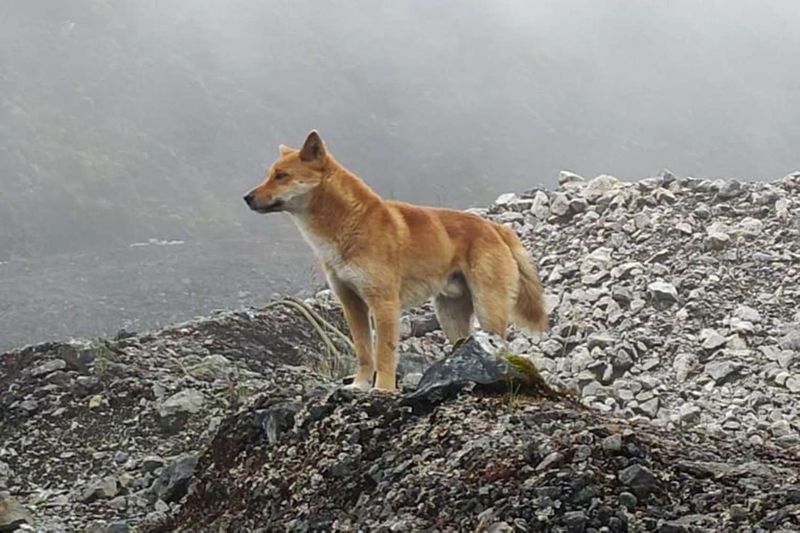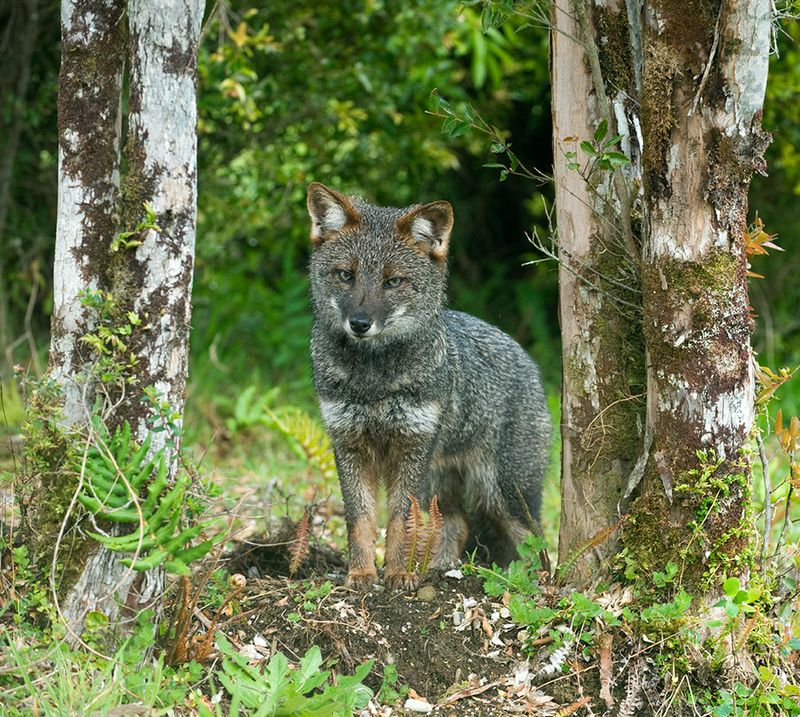The world is home to some extraordinary creatures, and among the most elusive are the rare wild dogs that roam our planet today. These fascinating animals are not only a testament to the incredible diversity of life on Earth but also a reminder of the challenges that many species face in the wild. From the dense forests of Africa to the remote islands of Southeast Asia, these dogs have adapted to survive in some of the most challenging environments. Join us as we explore the unique characteristics and intriguing stories of these rare wild canines.
African Wild Dog
In the vast savannahs of Africa, the African wild dog thrives with its patchwork of mottled fur. Sociable and intelligent, these dogs live in highly organized packs of up to 40 members. Each pack has a unique social structure, often led by a dominant pair.
The African wild dog is an exceptional hunter, boasting an 80% success rate, which is one of the highest among predators. Their cooperative hunting techniques and ability to cover vast distances make them formidable predators.
However, habitat fragmentation and human-wildlife conflict threaten their existence, needing strong conservation efforts.
Dhole
In the dense jungles of Asia, the dhole, or Asiatic wild dog, stands out with its vibrant russet fur. Known for its distinctive whistle-like calls, this social creature is found in India’s forests. Dholes hunt in coordinated packs, displaying incredible teamwork and agility.
Interestingly, they can take down prey much larger than themselves, highlighting their strength and cooperation. Their vocal communication helps them strategize during hunts and maintain social bonds within the pack.
Sadly, habitat destruction and competition with other predators threaten their populations, making conservation efforts essential.
Bush Dog
Deep in the heart of the Amazon, the bush dog uses its unique webbed feet to swim through the wetlands. This small, elusive canine has a stocky build and brown fur, perfectly adapted for a life in dense forests and aquatic environments.
Bush dogs are social animals, living in small packs and exhibiting cooperative hunting techniques. They primarily prey on rodents and small mammals, using their keen sense of smell.
Despite their adaptability, habitat loss and fragmentation pose significant threats to their survival, highlighting the need for habitat conservation.
Ethiopian Wolf
The Ethiopian wolf, with its fiery red coat, roams the highlands of Ethiopia. Known as Africa’s most endangered carnivore, only about 500 remain. These wolves exhibit remarkable adaptability, thriving in Afroalpine habitats. They primarily feed on rodents, showcasing specialized hunting skills.
Interestingly, Ethiopian wolves live in social packs but hunt alone, a unique trait among canids. This solitary hunting style helps them efficiently catch their prey. Despite their solitary hunting, they rely on pack cooperation for survival.
Conservation efforts are crucial to protect this rare species from extinction due to habitat loss and disease.
Maned Wolf
With the appearance of a fox on stilts, the maned wolf struts through South America’s grasslands. Its long legs and reddish coat make it unmistakable, while its distinctive mane adds to its allure. The maned wolf is solitary, unlike other social canines, and primarily nocturnal.
Its diet is omnivorous, feeding on fruits, small mammals, and birds. These wolves communicate using a deep, booming roar-bark, unique to their species.
Threatened by habitat loss due to agricultural expansion, the maned wolf’s conservation is vital to preserve its unique ecological role in the Cerrado biome.
New Guinea Singing Dog
High in the remote mountains of New Guinea, the singing dog howls its melodious tunes. These dogs are known for their unique vocalizations, which resemble a yodeling song. With a golden coat and agile build, they have adapted to rugged terrains.
Their mysterious origins and rare sightings add to the enigma of these wild canines. They are excellent climbers, aiding their survival in mountainous regions.
Once thought extinct in the wild, their recent rediscovery has sparked interest in their conservation, highlighting the importance of preserving their habitat and unique genetic heritage.
Darwin’s Fox
In Chile’s Valdivian forests, Darwin’s fox prowls with stealth and curiosity. This small, dark-furred fox is critically endangered, with only a few hundred individuals remaining. Known for its elusive nature, it primarily inhabits dense, temperate rainforests.
These solitary creatures are opportunistic feeders, consuming a varied diet of fruits, insects, and small vertebrates. Their nocturnal habits and secretive behavior make them difficult to study.
Conservation efforts focus on protecting their forest habitats and raising awareness to prevent further decline, securing a future for this rare fox species.
Simien Jackal
The Simien jackal, or Ethiopian wolf, often mistaken for its cousin, is a rare gem of the Ethiopian highlands. With its golden-tan coat and slender build, it navigates the rocky slopes with precision.
Though similar in appearance to the Ethiopian wolf, the Simien jackal represents a distinct genetic lineage. Its diet consists mainly of small mammals and birds, hunted with stealth and efficiency.
Efforts to conserve this unique species involve habitat protection and mitigating human-wildlife conflicts, ensuring its continued presence in the fragile Ethiopian ecosystem.
Sechuran Fox
In the arid deserts of Peru, the Sechuran fox navigates its harsh environment with resilience. This small fox, with sandy-colored fur, is adapted to life in dry regions where water and food are scarce.
Despite its environment, the Sechuran fox thrives by being an opportunistic feeder, consuming insects, small mammals, and even cacti. Its adaptability is key to its survival in such challenging habitats.
Efforts to protect its habitat and study its ecology are crucial, as human activities encroach on its territory, threatening its existence.

